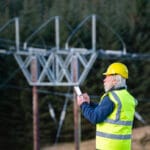Are Wireless Networks for Airlines Really Useful?
It would be an understatement to say that wireless technology has transformed our lives. Most current internet-enabled devices are mobile, and it has been made possible by Wi-Fi. As a result, Wi-Fi is now the top requested amenity by travelers.
Learning that the transport industry, especially airlines, is now relying on wireless services to add value to their own service doesn’t come as a surprise in light of these recent advancements. Now, when offering best-in-class wireless services, airports and airlines often focus on speed.
However, a fast network alone can’t be successful in an airport or airplane, considering the sheer number of people and devices that will connect to the network. To ensure optimal user experience and deliver exceptional wireless services at airports, density and coverage need to be considered as well. Only then will airlines and airports provide passengers with better service.
Let’s consider these elements in more detail to understand what airlines and airports really need for a better wireless network environment.
Wireless Networks for Airlines & Airports
Speed
Yes, a fast network improves the experience. Whether it’s Wi-Fi or Bluetooth connectivity, a fast and seamless connection helps users avoid expensive cellular roaming and data fees and makes an already-stressful journey bearable.
According to our wireless network engineers, wireless networks must be able to facilitate primary user activities to be of real use to airports and airlines. These activities include:
- Browsing
- Emails
- Social networking
- Music
- Video streaming
Airports can offer tiers of networks with speeds up to 50 Mbps for business class, while the rest may be confined to at least 10 Mbps.
Network Density
If a Wi-Fi network isn’t dense, it may cause connectivity issues. The bandwidth of a less dense network will be distributed across a wide range of devices, resulting in a bad user experience. For example, when provided with a less dense connection, a handful of individuals seated at terminal A may have high browsing speeds while people in the crowded terminal B may not be able to connect at all!
According to wireless network experts, you need to focus on having a high-bandwidth network much more than speed so that the system can handle the traffic.
Coverage
Wireless technology has one key issue — network coverage. Passengers may be able to connect to the Wi-Fi or use a Bluetooth service quite easily at the gate but may not have signals within the plane or at other areas of the airport.
To craft impeccable experiences, you need to offer connectivity every step of the way. Dubai International Airport offers one of the fastest free Wi-Fi networks in the world. Unfortunately, the coverage doesn’t begin from the ticketing booth. Instead, you get peak connectivity at the gate, which may not be available once passengers board their flight.
Gaps in coverage compromise user experience, which ultimately makes a poor impression on customers.
When looking to add value for travelers at your airport or by offering in-flight Wi-Fi, you need to consider all three pillars mentioned above to ensure your investment pays off. Wireless networks for airlines are exceptionally useful in crafting customer experiences and urging them to return.
If you want to get your airport or airline’s wireless services evaluated, give Americom expert engineers a call. They will help you make the most of your investment. Let us help you strengthen your connectivity!




